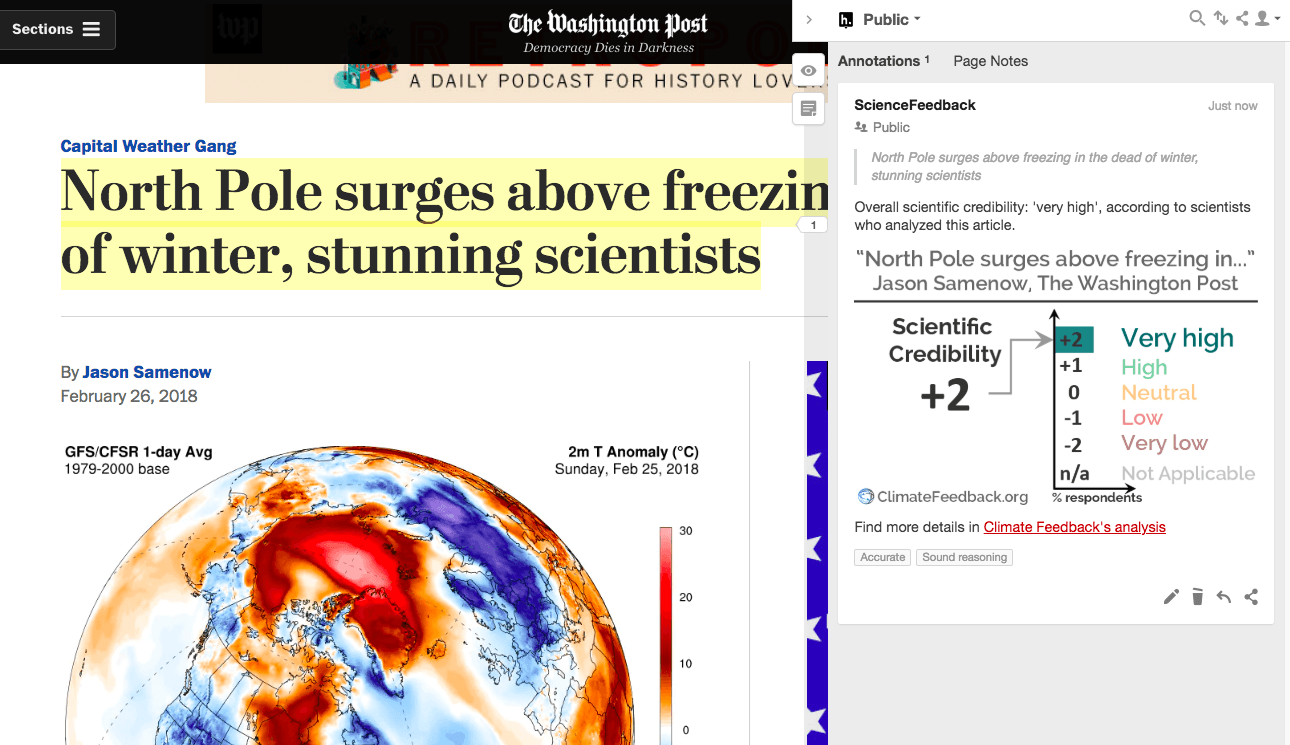Two scientists analyzed the article and estimate its overall scientific credibility to be 'very high'. more about the credibility rating
A majority of reviewers tagged the article as: Accurate, Sound reasoning.

SCIENTISTS‘ FEEDBACK
SUMMARY
This article in The Washington Post describes a pattern of unusually warm weather in February 2018, during which the North Pole saw above-freezing air temperatures. The article also places this event in context of past weather variability, explaining that there is an increasing trend of warm temperature extremes.
Scientists who reviewed the story found that it covered both of these points accurately. The trends are correctly identified without exaggeration, giving readers an accurate understanding of what the data show.
This is part of a series of reviews of 2018’s most popular climate stories on social media.
You can read the article here.
REVIEWERS’ OVERALL FEEDBACK
These comments are the overall assessment of scientists on the article, they are substantiated by their knowledge in the field and by the content of the analysis in the annotations on the article.
Robert Graham, Postdoc, Norwegian Polar Institute:
The article presents and discusses this weather event in the article accurately, and provides figures to show this. The journalist has contacted several scientists from different research institutes to comment on the event and quotes these scientists accurately, with references. I do not identify anything in the article that is incorrect/flawed.
Kelly McCusker, Research Associate, Rhodium Group and Climate Impact Lab:
This article accurately describes the Arctic warming event and associated surprise by scientists, includes multiple explanations for possible causes, and does not overstate any connections to climate change, pointing out that more data is needed to know if these above-freezing events will be a new Arctic normal.
Notes:
[1] See the rating guidelines used for article evaluations.
[2] Each evaluation is independent. Scientists‘ comments are all published at the same time.

